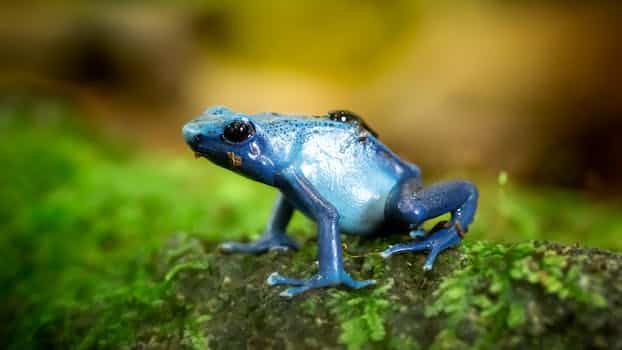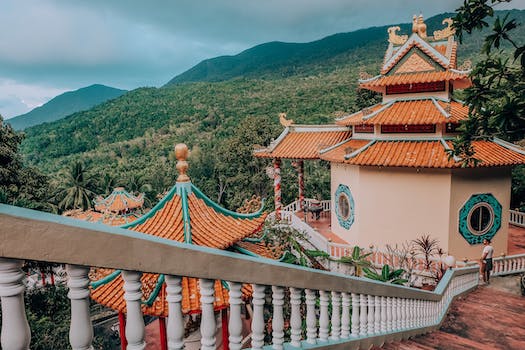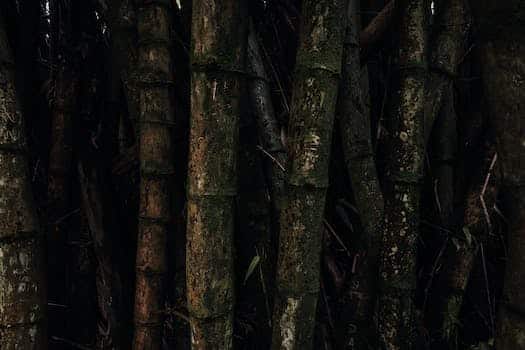The Amazon Rainforest is one of the most biodiverse places on Earth, home to countless species of plants and animals. In this article, we will be exploring the wonders of wildlife in the Amazon Rainforest, from the iconic jaguar to the elusive pink river dolphin. Join us on a journey through this incredible ecosystem and discover the amazing creatures that call it home.
- 1. Introduction
- 1.1. The beauty and complexity of the Amazon rainforest
- 1.2. The importance of preserving wildlife in the Amazon
- 1.3. The thrill of discovering wildlife in the Amazon
- 2. Types of Wildlife in the Amazon
- 2.1. Mammals
- 2.2. Birds
- 2.3. Reptiles and amphibians
- 2.4. Fish
- 2.5. Insects and arachnids
- 3. Best Practices for Wildlife Exploration in the Amazon
- 3.1. Respect the environment
- 3.2. Use a knowledgeable guide
- 3.3. Be aware of potential dangers
- 3.4. Stay on designated paths
- 3.5. Do not disturb or feed the wildlife
- 4. Popular Wildlife Hotspots in the Amazon
- 4.1. Manu National Park
- 4.2. Tambopata National Reserve
- 4.3. Yasuni National Park
- 4.4. Cuyabeno Wildlife Reserve
- 4.5. Madidi National Park
- 5. Tips for Photographing Wildlife in the Amazon
1. Introduction
The Amazon Rainforest is a vast and diverse ecosystem that is home to an incredible array of wildlife. From exotic birds and colorful butterflies to jaguars and anacondas, the rainforest is bursting with life at every turn. Exploring the wonders of this unique environment is a thrilling experience for anyone who loves nature and adventure. In this article, we’ll take a closer look at some of the incredible wildlife that can be found in the Amazon Rainforest, and what makes this ecosystem so special.
1.1. The beauty and complexity of the Amazon rainforest
The Amazon rainforest is a vast and magnificent expanse of greenery and wildlife. It covers an area of approximately 6.7 million square kilometers and is home to over 10% of the world’s known species. The sheer complexity of the Amazon’s ecosystem is awe-inspiring, with thousands of interconnected species and intricate relationships between them. From the towering trees to the smallest insects, every aspect of the rainforest plays a vital role in maintaining its delicate balance. And yet, despite its beauty and complexity, the Amazon is under threat from deforestation and climate change. It is more important than ever to appreciate and protect this incredible natural wonder.
1.2. The importance of preserving wildlife in the Amazon
The Amazon Rainforest is home to some of the most diverse and unique wildlife on the planet. From jaguars to anacondas, macaws to monkeys, the Amazon is a haven for thousands of species. However, the rapid destruction of the rainforest is threatening the existence of many of these animals. Preserving wildlife in the Amazon is not only important for the animals themselves, but for the health of the entire ecosystem. Without certain species, the delicate balance of the rainforest could be disrupted, leading to a domino effect that could have far-reaching consequences for the planet as a whole. It is crucial that we take action to protect the Amazon and its inhabitants before it is too late.
1.3. The thrill of discovering wildlife in the Amazon
The Amazon Rainforest is known for its incredible biodiversity and is home to some of the most fascinating and unique wildlife in the world. The thrill of discovering these creatures in their natural habitat is an experience that cannot be matched. From colorful birds to elusive jungle cats, the Amazon offers a truly immersive and unforgettable wildlife experience for those willing to explore its depths.
2. Types of Wildlife in the Amazon
The Amazon Rainforest is home to an incredible diversity of wildlife. There are over 2.5 million insect species, tens of thousands of plants, and thousands of different types of mammals, birds, reptiles, and fish. Some of the most iconic wildlife in the Amazon includes jaguars, anacondas, macaws, capybaras, and pink river dolphins. However, there are also many lesser-known species that are just as fascinating, such as the hoatzin bird, the giant otter, and the electric eel. Whether you’re interested in spotting the big-name animals or discovering new and unique species, the Amazon is a wildlife lover’s paradise.
2.1. Mammals
Mammals are among the most fascinating creatures to observe in the Amazon Rainforest. With over 400 species of mammals found in the region, visitors to the Amazon are sure to encounter a diverse array of wildlife. From the elusive jaguar to the adorable capybara, the Amazon is home to some of the most iconic mammals in the world. Other notable mammals found in the region include sloths, monkeys, tapirs, and anteaters. Whether you’re a wildlife enthusiast or simply looking to immerse yourself in the beauty of nature, the Amazon Rainforest offers a truly unforgettable experience.
2.2. Birds
The Amazon Rainforest is home to an incredible variety of bird species. From the iconic macaws and toucans to the secretive tinamous and antbirds, there are over 1500 species of birds that call the Amazon home. Some of the most impressive birds in the Amazon include the harpy eagle, the largest and most powerful raptor in the Americas, and the hoatzin, a unique bird with a digestive system that resembles that of a cow. Whether you’re a birdwatching enthusiast or simply appreciate the beauty of these winged wonders, the Amazon Rainforest is sure to delight and amaze.
2.3. Reptiles and amphibians
The Amazon Rainforest is home to a staggering variety of wildlife, including a vast array of reptiles and amphibians. Some of the most iconic species found in the region include anacondas, caimans, and giant river turtles. Other notable reptiles include green iguanas, emerald tree boas, and the aptly named Jesus Christ lizard, which can run on water. Amphibians are also abundant in the rainforest, with colorful poison dart frogs and the giant waxy monkey tree frog among the most recognizable. Despite their beauty, many of these species face threats from habitat destruction and the illegal pet trade, making conservation efforts crucial to their survival.
2.4. Fish
The Amazon Rainforest is home to a vast array of wildlife, including numerous species of fish. Some of the most well-known fish found in the Amazon include piranhas, catfish, and the arapaima, which is one of the largest freshwater fish in the world. Other notable species include the electric eel, which is capable of producing electric shocks strong enough to stun prey, and the Amazon river dolphin, which is one of the few species of freshwater dolphins in the world. With over 3,000 species of fish found in the Amazon River alone, there is no shortage of fascinating aquatic life to discover in this incredible ecosystem.
2.5. Insects and arachnids
The Amazon Rainforest is home to a vast array of wildlife, including a diverse range of insects and arachnids. Some of the most fascinating creatures found in this ecosystem include tarantulas, scorpions, beetles, and butterflies. The Amazon is also home to some of the most venomous insects in the world, such as the bullet ant, whose sting is said to be as painful as a gunshot. Despite their small size, these animals play a crucial role in maintaining the delicate balance of the rainforest ecosystem.
3. Best Practices for Wildlife Exploration in the Amazon
When exploring the wildlife in the Amazon Rainforest, it is important to adhere to certain best practices to ensure safety for both humans and animals. Firstly, it is crucial to respect the natural habitat of the animals and avoid disturbing their environment. This means staying on designated paths and not touching or feeding any wildlife. Secondly, it is important to be aware of the potential dangers present in the rainforest, such as venomous snakes and poisonous plants. It is recommended to always wear appropriate clothing and footwear, and to bring insect repellent and sunscreen. Finally, it is essential to choose a reputable and responsible tour operator that follows ethical and sustainable practices for wildlife observation. By following these best practices, visitors can enjoy the wonders of the Amazon Rainforest while also protecting its delicate ecosystem.
3.1. Respect the environment
Respecting the environment is crucial when exploring wildlife in the Amazon rainforest. The delicate ecosystem of the rainforest requires careful consideration and conservation efforts. As a responsible traveler, it is important to be aware of the impact that your actions can have on the environment and take steps to minimize that impact. This includes following all rules and guidelines set by local authorities, staying on designated paths, not disturbing or feeding wildlife, and properly disposing of waste. By taking these actions, we can help preserve the natural beauty and biodiversity of the Amazon rainforest for generations to come.
3.2. Use a knowledgeable guide
When exploring the Amazon Rainforest, it is important to use a knowledgeable guide who can navigate the area and provide valuable information about the wildlife you may encounter. A good guide will also prioritize the safety of both you and the animals, and will ensure that you do not disturb their natural habitats. Additionally, it is important to practice responsible tourism by not leaving any litter or disturbing the environment in any way. By following these best practices, you can have a memorable and enjoyable wildlife exploration experience in the Amazon.
3.3. Be aware of potential dangers
When embarking on a wildlife exploration in the Amazon Rainforest, it is important to be aware of the potential dangers that come with encountering wild animals. It is always best to observe wildlife from a safe distance and avoid getting too close or attempting to touch them. Additionally, it is important to be aware of the local poisonous plants and insects, such as snakes and spiders, and to take necessary precautions to avoid encounters. Before heading out for a wildlife excursion, it is always best to do research and consult with a local guide who is knowledgeable about the area and can advise on best practices for a safe and enjoyable experience.
3.4. Stay on designated paths
When visiting the Amazon Rainforest, it is crucial to stay on designated paths while exploring the wildlife. Straying off the paths can be dangerous for both you and the animals. It is important to remember that you are visiting the animals’ natural habitat, and disrupting their environment can cause harm to their ecosystems. Additionally, staying on the designated paths helps to preserve the vegetation and prevent erosion. By following this best practice, you can ensure a safe and responsible wildlife exploration experience in the Amazon.
3.5. Do not disturb or feed the wildlife
When exploring the wildlife in the Amazon Rainforest, it is important to remember not to disturb or feed the animals. While it may be tempting to get up close and personal with these amazing creatures, it is crucial to respect their natural habitat and behavior. Feeding the animals can disrupt their natural feeding patterns and cause them to become dependent on humans for food. Similarly, disturbing the animals can cause them stress and harm, and can even lead to dangerous situations for both the animals and humans involved. Therefore, it is best to observe the wildlife from a safe distance and appreciate their beauty and importance in the ecosystem.
4. Popular Wildlife Hotspots in the Amazon
The Amazon Rainforest is home to an incredibly diverse range of wildlife, and there are many popular hotspots where visitors can see some of the most incredible creatures in the world. One of the most popular destinations for wildlife enthusiasts is the Tambopata National Reserve, which is located in southeastern Peru. This area is home to a wide range of rare and endangered species, including jaguars, giant otters, and macaws. Another hotspot for wildlife in the Amazon is the Yasuni National Park in Ecuador, which is often referred to as the most biodiverse place on earth. Here, visitors can see everything from pink river dolphins to giant armadillos and anacondas. Other popular spots for wildlife watching in the Amazon include the Madidi National Park in Bolivia, the Manu National Park in Peru, and the Pacaya Samiria National Reserve in Peru.
4.1. Manu National Park
Manu National Park is one of the most popular wildlife hotspots in the Amazon. Located in Peru, the park is home to a diverse range of flora and fauna, including over 1,000 species of birds, 13 species of monkeys, and numerous other mammals, reptiles, and amphibians. Visitors to the park can explore the rainforest on foot or by boat, and may have the chance to spot iconic Amazonian species such as jaguars, giant otters, and macaws. Manu National Park is also known for its cultural significance, with several indigenous communities living within the park boundaries. Overall, Manu National Park is a must-visit destination for anyone interested in experiencing the wonders of wildlife in the Amazon.
4.2. Tambopata National Reserve
Tambopata National Reserve is one of the most popular wildlife hotspots in the Amazon rainforest. Located in southeastern Peru, the reserve covers an area of over 1,400 square miles and is home to an incredibly diverse range of flora and fauna. Visitors to Tambopata National Reserve can explore the lush rainforest, spot a variety of exotic bird species, and witness the incredible biodiversity of the Amazon firsthand. The reserve is also home to several indigenous communities, providing a unique opportunity to learn about their traditional way of life and culture.
4.3. Yasuni National Park
Yasuni National Park is a popular destination for wildlife enthusiasts and nature lovers. Located in Ecuador, this protected area is home to a vast array of species, including monkeys, birds, reptiles, and amphibians. The park is known for its incredible biodiversity and is considered one of the most biologically diverse places on Earth. Visitors to Yasuni can take guided tours through the jungle, go birdwatching, or simply relax and enjoy the natural beauty of the area. With so much to see and do, Yasuni National Park is a must-visit destination for anyone interested in exploring the wonders of the Amazon rainforest.
4.4. Cuyabeno Wildlife Reserve
The Cuyabeno Wildlife Reserve is one of the most popular wildlife hotspots in the Amazon Rainforest. This vast and diverse reserve covers over 600,000 hectares of pristine jungle and is home to an incredible array of wildlife, including jaguars, pumas, tapirs, monkeys, and an astonishing 500 species of birds. Visitors to Cuyabeno can explore the reserve by canoe, hiking through the jungle, or taking a night tour to spot some of the reserve’s nocturnal creatures. With its stunning natural beauty and abundant wildlife, Cuyabeno Wildlife Reserve is a must-see destination for any nature lover visiting the Amazon.
4.5. Madidi National Park
Madidi National Park is a popular wildlife hotspot located in the Amazon Rainforest of Bolivia. Covering an area of over 18,000 square kilometers, it is considered one of the most biologically diverse places on earth. The park is home to over 1,000 species of birds, 44 species of bats, and over 100 species of mammals, including jaguars, pumas, tapirs, and giant otters. Visitors to Madidi National Park can also see a variety of primates, such as spider monkeys, howler monkeys, and capuchin monkeys. The park offers a range of activities for visitors, including guided hikes, river tours, and birdwatching expeditions, making it an ideal destination for nature lovers and wildlife enthusiasts alike.
5. Tips for Photographing Wildlife in the Amazon
Photographing wildlife in the Amazon can be both exciting and challenging. Here are some tips to help you capture stunning shots of the amazing creatures that call the rainforest home:
1. Be patient: Wildlife can be elusive, so be prepared to wait for the perfect shot. Spend some time observing the animal’s behavior and movements to anticipate their next move.
2. Use a telephoto lens: The dense vegetation in the rainforest can make it difficult to get close to wildlife. A telephoto lens will allow you to capture close-up shots without disturbing the animals.
3. Be prepared for low light: The rainforest can be dimly lit, especially in the early morning and late afternoon. Use a fast lens and a high ISO to capture clear, sharp images in low light conditions.
4. Get down to eye level: Shooting from a low angle can create a more intimate and engaging image. Try to get down to the animal’s eye level for a unique perspective.
5. Respect the animals: Remember to always put the welfare of the animals first. Don’t disturb their natural behavior or habitat, and never approach them too closely. With these tips in mind, you can capture stunning photographs of the incredible wildlife in the Amazon rainforest.
5.1. Invest in a good camera and lens
Investing in a good camera and lens is crucial for capturing the magnificent wildlife in the Amazon Rainforest. With the vast and diverse range of creatures, from tiny insects to towering trees, it’s important to have equipment that can capture the details and beauty of each subject. A high-quality camera and lens will also help you in low light conditions, which are common in the dense forest. So, before embarking on your wildlife photography adventure, make sure to invest in a camera and lens that can handle the challenges of the Amazon.
5.2. Learn about wildlife behavior and habits
To capture stunning photographs of wildlife in the Amazon rainforest, it’s essential to learn about their behavior and habits. Understanding the animals’ patterns and routines can help you anticipate their movements and be in the right place at the right time. For example, some species are more active in the early morning or late afternoon, while others are nocturnal. Additionally, many animals have specific feeding or mating seasons that can affect their behavior. By researching and observing the wildlife beforehand, you can increase your chances of capturing incredible shots.
5.3. Use natural light to your advantage
When photographing wildlife in the Amazon, one of the best things you can do is take advantage of natural light. The rainforest is home to incredibly diverse and beautiful species, and the right lighting can make all the difference in capturing their essence. Try to shoot during the early morning or late afternoon when the sun is lower in the sky, as this will create softer and more flattering light. Additionally, consider using reflectors or diffusers to manipulate the light and create interesting shadows and highlights. By using natural light to your advantage, you can take stunning photos that truly capture the magic of the Amazon’s wildlife.
5.4. Be patient and observant
When it comes to photographing wildlife in the Amazon, patience and observation are key. Many animals in the rainforest are elusive and may take some time to spot. Be sure to move slowly and quietly, taking time to scan the trees and underbrush for movement or signs of life. Once you do spot an animal, observe its behavior and movements before attempting to take a photo. This will give you a better chance of capturing a great shot. Additionally, be aware of your surroundings and respect the animals’ space. Avoid getting too close or disturbing their natural habitat.
5.5. Respect the wildlife and their habitat
Respecting the wildlife and their habitat is crucial when photographing them in the Amazon rainforest. As visitors, we must be aware of the impact we have on their environment and the delicate balance of the ecosystem. It’s important to remember that we are entering their home and should treat it with the utmost respect. This includes not disturbing their natural behavior, avoiding loud noises and sudden movements, and not leaving any trash behind. By following these guidelines, we can ensure that we are not only capturing beautiful photographs but also preserving the Amazon rainforest for generations to come.
Conclusion
In conclusion, the Amazon Rainforest is a remarkable place to explore and experience the wonders of wildlife. With its vast expanse of dense vegetation, unique ecosystems, and diverse animal species, the Amazon is a true natural wonder that continues to captivate and amaze visitors from all over the world.





